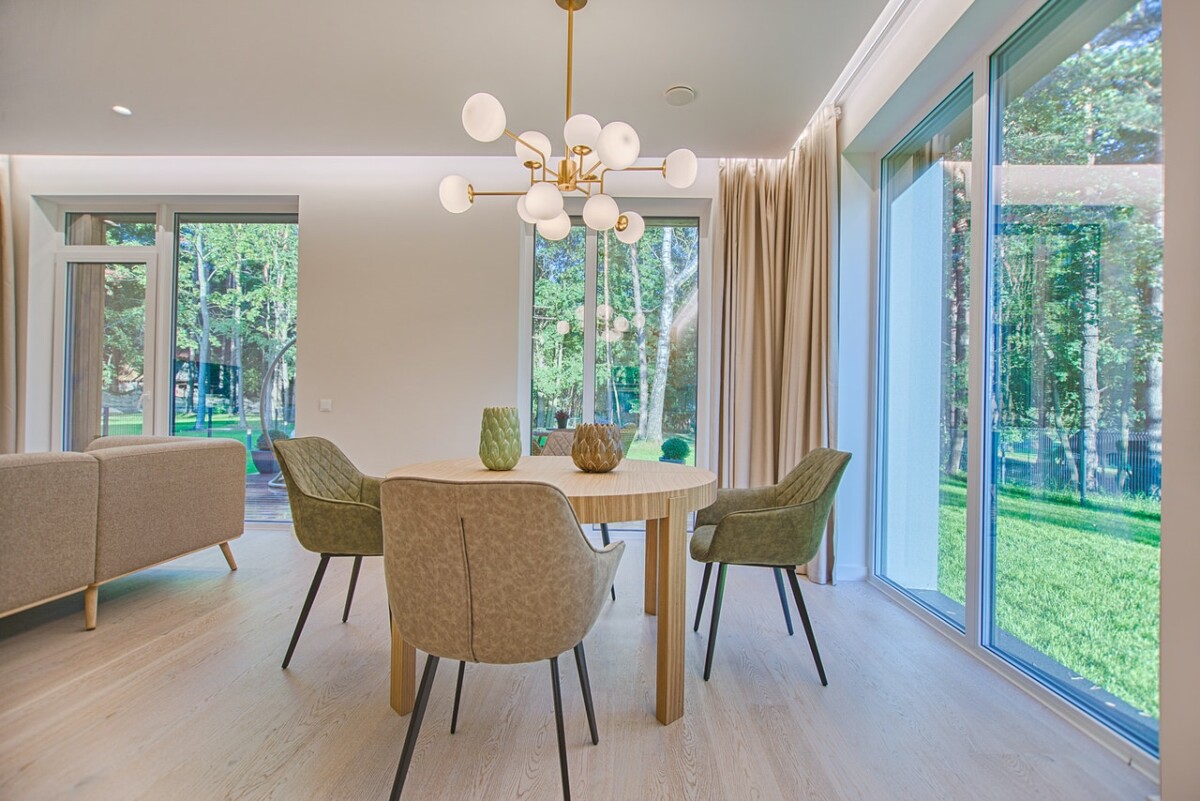Having an apartment balcony is definitely a perk. People like to refresh, dry clothes or entertain themselves in an open area. This makes privately accessed balconies a great and natural extra space to have. But for unsupervised little ones, a height and open exposure like that poses an equally great danger.
To keep your balcony safe for your baby and minimize the risk, take the following 5 measures:
- Plan before moving in
- Cover balcony with shields
- Shut the doors
- Buy baby safety gate
- Get a playpen
Balcony safety ideas for toddlers
1. Plan before moving in
Life happens. But what if you had the slightest chance to control the outcome? You would definitely go for it.
Hunting for a new rental presents the opportunity to settle for what’s best for you. If you have a baby coming, you will have to consider their safety before they start to crawl.
Urban development authorities do the leg work of ensuring apartment buildings are hazard-proof before they’re approved to host human beings.
On a personal level you can inspect other features that may harm the safety of your child.
Open balconies, staircases or ledges that cannot be blocked off by a baby gate are less desirable to sustain unintended tumbles.
You surely don’t want to rely only on the safety gate. At least, there should be a pretty standard balcony wall or grill to only make a few adjustments.
2. Cover balcony with shields
If you already moved in and you’re just not satisfied with the frame and bars on the balcony, it’s time to shop for your first protection product.
Local stores supply balcony shields, which are thick rolls of plastic shields that can be used to cover open areas within balcony posts.
Never will you worry again about your baby fitting her body through balcony posts when you have them installed. Sometimes they are also referred to as banister shields because of their indoor versatile usability.
Plexiglass is another option here. Though expensive, it can serve to fill balcony frame gaps as well as protect against rain, dust and sunlight.
3. Shut the doors
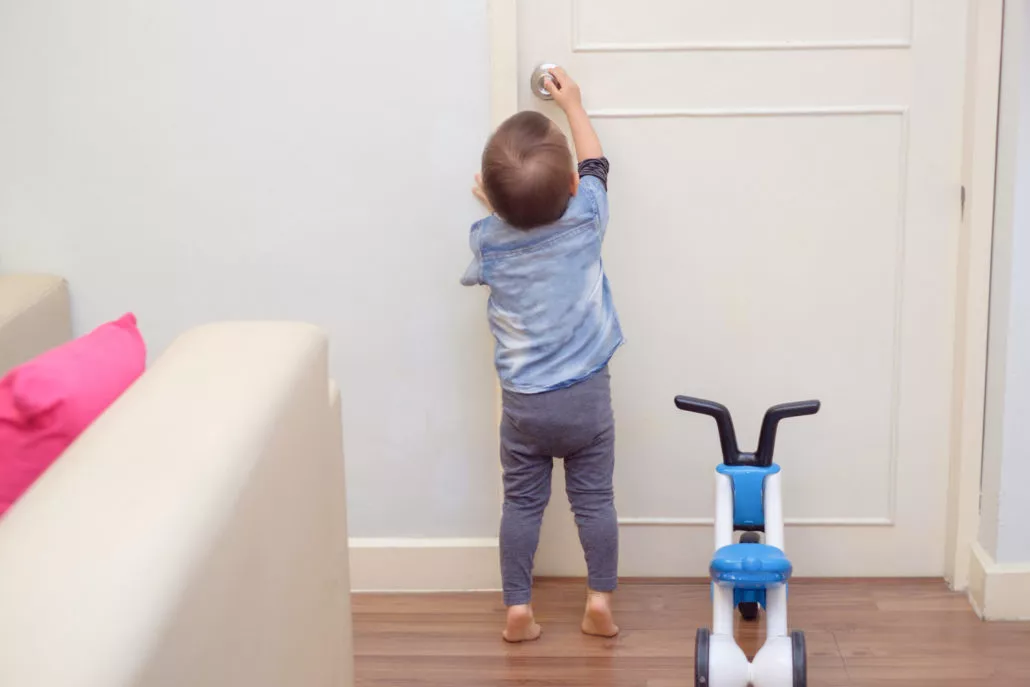
Without keeping the doors to your apartment balcony closed, a plastic shield won’t stop a skilled little one from jumping over.
When climatic conditions allow you to commit to closed apartment doors, then please do so.
We want to ensure the balcony is out of reach.
For the sake of everybody in your home, aerate the apartment enough by opening the windows instead, so that the warm, stuffy air can escape and be replaced by cool air.
That way, even when you’re not looking, a creeping baby won’t access the balcony.
4. Buy baby safety gate
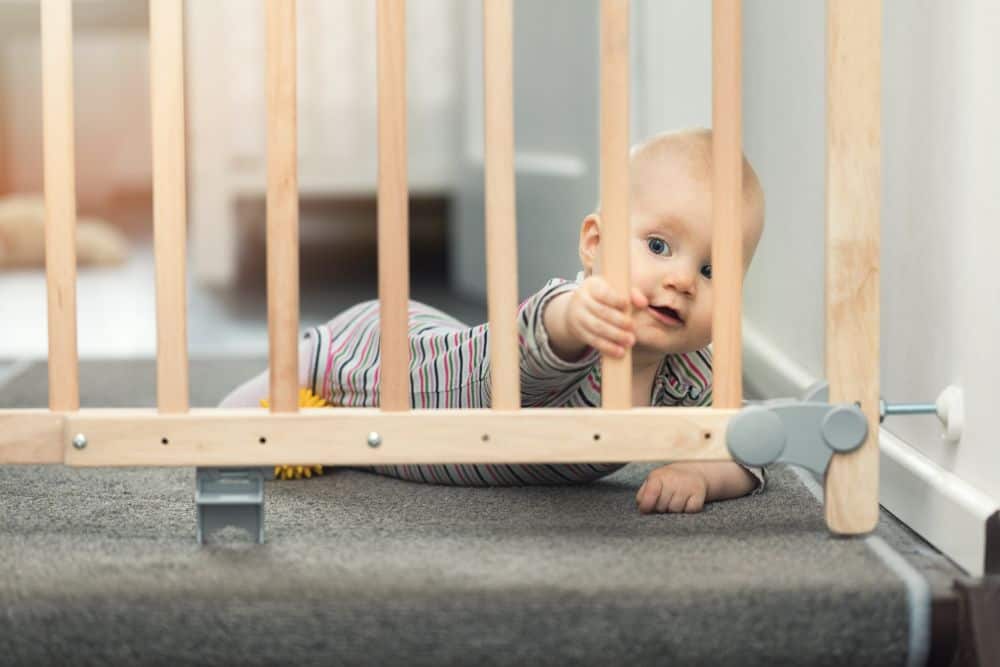
Circumstances may not allow you to keep the door leading to the balcony shut the whole day.
Alternatively, a baby safety gate is available on the market for you to purchase. A pressure mounted gate for example, can be conveniently placed to block the doorway and be removed when after it has served the purpose.
No need of worrying about fitting the gate permanently with screws and drilling holes. You can use it in other areas of the house too.
Considering that a safety gate completely divides a section of the floor area to offer an added layer of security, it’s worth the money you spend.
5. Get a playpen
There are many purposes for which we use the balcony. It won’t be a sensible idea for kids to roam freely there.
You could have plant pots or other fragile things you wouldn’t want your baby to make way into. If you use your balcony as a storage place for equipment like barbecue grills, then your baby will be interested to touch or hang over.
They could tamper with your valuable things or worse, eat dirt and put their health at risk.
A perfect solution for baby safety on the balcony is a play pen. However, you have to make sure no plant or equipment gets in their way. You want to store them a bit far away from their reach.
What to consider when planning to keep your balcony safe
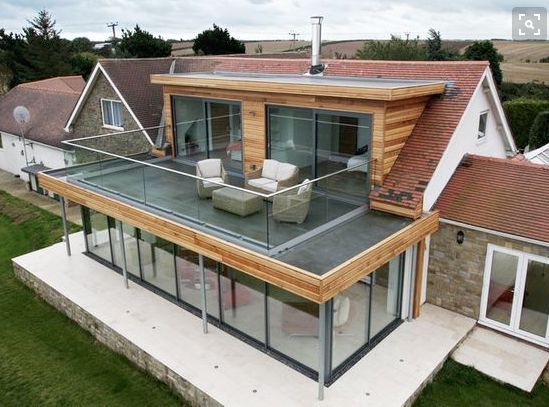
1. Lockable balcony
As much as a balcony offers extra space, it’s never safe for unsupervised kids. As a precaution, the balcony door should be lockable with at least 2 locks – one fitted far from the reach of toddlers.
If other dwellers of your house use the balcony on a regular basis, inform them of the dangers and importance of keeping it out of bounds or only use when necessary.
2. Climbable balcony
Children can have exceptional climbing skills. Underestimating their abilities is the worst thing you can do.
If your balcony is arranged in a way that toddlers can climb up the wall, it’s time to reconsider the setup. Curious minds will want to see what’s on the other side of the wall.
Apart from risking falling off the balcony to the ground, when your child is able to move up the wall, then can fall inside the balcony and still get badly injured.
3. Railing gaps
Different balcony designs and makeup present different climbing hazards. A balcony with rails could have escaping gaps within.
More than 4 inches space between crisscrossed bars is enough for your child to fit through. Additionally, folded rails and grills provide perfect grip points for tiny feet to mount the frame.
4. Furniture and toys
Tables and chairs in the balcony can be improvised into ladders by your little geniuses. When you’re distracted from watching over them, they’ll drag a chair over a table and climb it.
Do you allow your children to play with toys in the balcony? If they are big, then they will be used as climbing platforms. That’s not the only thing to worry about. Toys that are easily movable, can be lifted and thrown off the balcony, endangering the safety of passersby beneath.
5. Barbecue
Burn hazards emanate from open fires and BBQs. No wonder regulations discourage using BBQs within your premises. Setting aside balcony space for such purposes only adds smoke and fire dangers to the likelihood of kids ascending the balcony.
6. Traveling abroad
Short visits abroad for holiday offer some time to relax but no chance to secure your balcony. Most serviced apartment owners might not meet every guest’s needs. They might have general safety measures in place. But this might not be up to your personal standards. It can be a daunting task to try to fix the balcony of a vacation rental because of your short stay.
Child proof roof terrace

Roof terraces are a great feature of a home. They allow you to breathe fresh air outdoors as you enjoy an elevated and secluded view of the neighborhood and the areas beyond.
Your children enjoy roof terrace as much as you do. They cannot protect themselves. Their safety is your responsibility.
Unless it’s your own house, not all landlords allow making permanent adjustments to their building. If they do and you’re willing to convince them by offsetting some or all of the cost, then apply these few ideas:
- Fit a tall trellis around the railing
- Build a custom design glass railing
- Fix a raised balustrade with tall posts and strung wire above glass.
General rental home baby-proofing tips
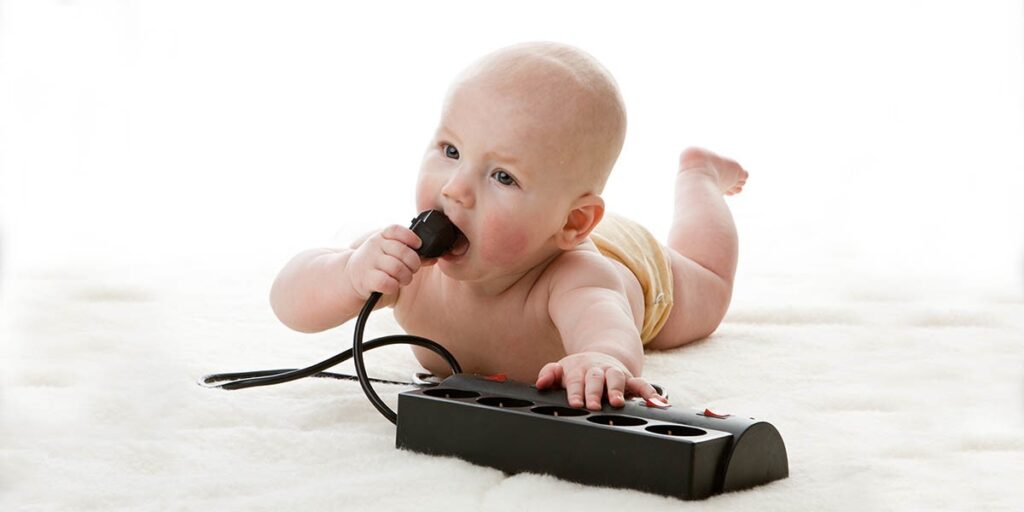
1. Things easy to knock over
Almost anything in the house can catch your curious and active baby’s eye. And if these items are loosely kept, they have the potential of causing harm.
Plants, picture frames and other home decors, are easy to knock over but can also cause tripping accidents that may be fatal.
In the kitchen, keep away knives, gas stoves, glass dishes and any object that is sharp, hot or that can shatter into pieces when dropped.
If the baby has to be with you in the kitchen, restrict her to her chair far from the table, sink, rags and if possible lock up all cookware and cutlery.
The next area you want to check is the living room.
Wires that connect the console, stereo system and TV set create a danger zone for unsuspecting children. They are not only hazardous when it comes to falling, but your child will be electrocutes when she puts live wire in her mouth.
Remove any cords running on the floor or hanging within reach. Cover or hide them away to minimize access for the kid.
2. Stairs
If your home has stairs, you need to be more vigilant than a rental property which does not. It means you have extra precautions you need to take.
First, ensure hand railings are sturdily and strongly supported.
Cover slippery frames such as wood, with non-slip materials to enhance grip.
On the same note, avoid placing furniture next to staircases, so that your kid doesn’t climb it.
Making time for friends by visiting them or meeting in a restaurant can prove a daunting task to keep kids safe. Don’t take your eyes off your baby. And if they have to play, balconies and stairs should be out of bounds.
3. Cabinets and cupboards
Lock up cupboards by all means.
These areas house medical supplies, cleaning products, pots, and pans, and if toddlers easily find them, they might want to experiment all manner of things with them.
Nowadays, there are a number of child-proof locks you can use on cabinets. Check online or with your retail store and organize for them to be fitted.
Now, there are rentals that do not provide provisions to lock or close kitchen cabinets. Maybe it’s due to the design.
Do not despair.
Simply, transfer potentially dangerous items to higher level shelves in the kitchen.
4. Heaters and radiators
The danger posed by heaters is burns.
Even if it’s your kid who is coming into contact, you risk losing your house’s possessions into flames.
Effects can be widespread.
We want to protect our children who can be the cause of overheating. Block accessibility to power switches or radiator valves so they won’t turn on.
Once you’re done using a radiator or heater, ensure it cools first before keeping away, just in case your kid is curious enough to touch it.
5. Furniture arrangement
It might not be easy to convince your landlord to replace furniture if you’re living in a furnished apartment.
On the other hand, if the furniture is yours, you can use that control to your advantage.
In what position is your chair or table? The solution may be to move them to a different location.
Are they wobbly, sharp or fragile?
If your answer is yes, then it’s time to replace them with standard, more family-favorable options.
Purchasing new furniture could be something that financial constraints won’t allow to do in the short-term. Safety guards come handy for that matter. Use them to smoothen and fill out jagged edges.
Any fastening on the wall should be brought to the attention of the owners of the house before any hardware installation.
6. Windows
Since windows open to the outside, they increase chances of fall. The higher you live from the round floor the scarier the accident gets.
That does not mean people living in lower floors face no such risk.
Regardless of the floor you live in, when your baby falls the impact can be bad or even lead to death.
Here are a few ways you baby-proof your rental apartment windows:
- Window Guards
- Window Stops
- Shard-Proof Window Films
- Window Cord Retrofit Kits
Related: How to Secure Ground Floor Apartment Windows
Prioritize your children’s safety
An apartment balcony can be a blessing in disguise, especially if you’re a new renter and have small children. This is where you can have great fun, enjoy fresh air without ever having to step outside the building.
Children will want to frequent this exposed area too and you don’t want it to be a danger zone.
The most important aspect of ensuring your child is safe if they ever get to the balcony, is making sure it’s completely protected with a shield and not easy to climb. Otherwise, totally restrict babies from going to the balcony.
A secured balcony is a safe home for the dwellers.


